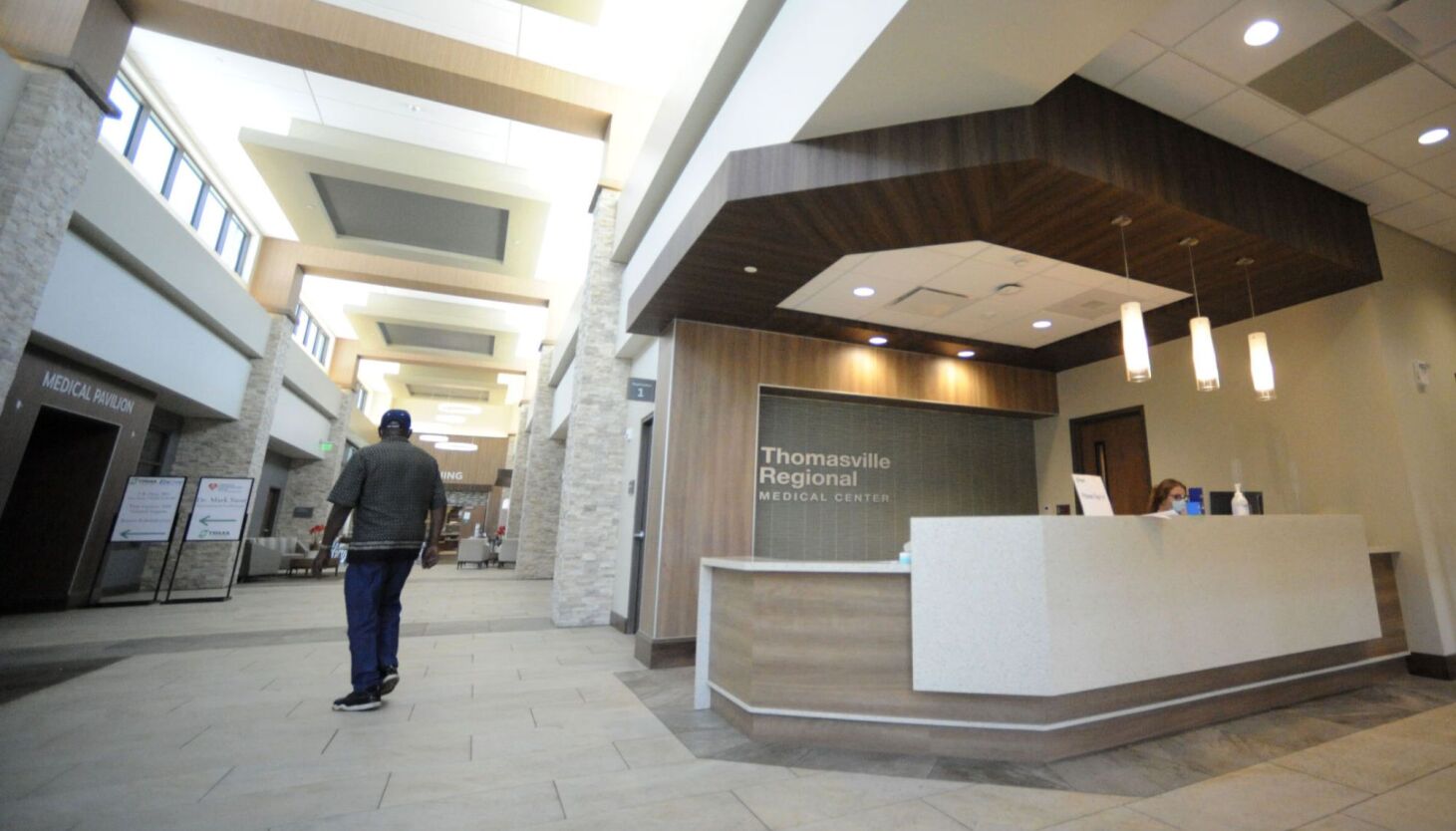- May 19, 2022
- No Comment
- 5 minutes read
CARES Act coronavirus relief problems dog 3 hospitals that opened as COVID struck – Chicago Sun-Times

Thomasville Regional Medical Center in Thomasville, Ala., is among three hospitals nationally that say they are missing out on federal pandemic relief money because they opened during or shortly before the COVID-19 crisis began, so they don’t have pre-pandemic financial statements to prove their coronavirus-related losses.
Jay Reeves / AP
THOMASVILLE, Ala. — People who live in this town celebrated when, in 2020, early in the coronavirus pandemic, Thomasville Regional Medical Center opened.
It offered state-of-the-art medicine previously unavailable in a poor, isolated part of Alabama. The timing seemed perfect: New treatment options would be available in an underserved area just as a global health crisis was unfolding.
But that timing could prove to be the new hospital’s undoing.
Deep in the red two years into the pandemic, the 29-bed, $40 million hospital is among three medical centers nationally that say they’re missing out on millions in federal pandemic relief money because they’re so new that they lack full financial statements from before the crisis to prove how much it cost them.
In Thomasville, located in timber country about 95 miles north of the Gulf Coast port of Mobile, hospital officials have worked for over a year to convince federal officials they should have gotten $8.2 million through the CARES Act, not just the $1 million they received. With a total debt of $35 million, the quest gets more urgent each day, said Curtis James, the hospital’s chief executive officer.
“No hospital can sustain itself without getting the CARES Act money that everybody else got,” James said.
In Derby Kansas, south of Wichita, Rock Regional Hospital is due as much as $15.8 million, but, because it opened only in April 2019 and lacks complete pre-pandemic financial statements, it has gotten just a little more than $985,000.
The only thing that’s saved it from financial ruin is the cooperation of doctors, contractors and vendors, who haven’t pushed for payments, according to Barry Beus, its chief executive officer. “If we lose them, we lose the hospital,” he said.
In Las Cruces, New Mexico, Three Crosses Regional Hospital opened in 2020 and piled up a staggering $16.8 million in losses in just three quarters while receiving only $28,000 in aid, according to Landon Fulmer, a Washington lobbyist working with all three hospitals to obtain more funding.
Each facility is being penalized for being new even though all provided the same costly COVID-19 care as other medical centers and similarly lost revenue from other procedures, including elective surgeries, Fulmer said.
“It really is quite a strange situation in a way, one that shouldn’t have happened,” he said.
With about 420,000 health care providers nationwide already receiving assistance from a $178 billion pot, the government isn’t covering 100% of losses for anyone, according to Chris Lundquist, a spokesman for the U.S. Health Resources and Services Administration, which oversees the program.
The agency used proxy financial information for hospitals that opened in 2019 or 2020 to create an equitable payment system, Lundquist said.
“They have all received funding,” he said, and can appeal for more and also can seek a supplemental appropriation or funding in future years.
Thomasville Mayor Sheldon Day has made several trips to Washington, D.C., to speak with members of the state’s congressional delegation and health officials.
“They’ve been assured they’re going to be taken care of.,” said Dr. Don Williamson, president of the Alabama Hospital Association. “But the fact is, when you’re dealing with government entities, you don’t have the money until you have the money.”
Thomasville is in southwest Alabama in an impoverished area where 70% of residents qualify for Medicare or Medicaid, and health care has been limited for generations.
The last hospital that had been remaining in Thomasville was shut down more than a decade ago.
Officials worked for years to secure a new hospital so people living there wouldn’t have to drive 90 minutes for services commonly available in big urban areas, such as digital imaging, full surgical options, echocardiograms and 3D mammography.
Under a partnership between the city and a municipal health care authority, Thomasville Regional got federal funding from the Department of Agriculture and opened March 3, 2020, before COVID caught fire.
“We thought we were off to a good start,” James said. “And then everything shut down.”
Patients stopped showing up for scans, elective surgeries, mammographies and other moneymaking services because of pandemic shutdowns. Within weeks, financial reports that previously looked promising turned dire.
Recognizing that new hospitals couldn’t calculate coronavirus losses because they had no previous years to compare to, federal officials allowed them to use budgeted numbers rather than prior financial statements.
That’s how the Thomasville hospital determined it was missing out on more than $7 million in aid, James said.
The Birmingham-based Medical Properties Trust recently gave the hospital $2 million, and James said he’s confident Thomasville Regional eventually will get the extra federal aid, “but it will take time.”

